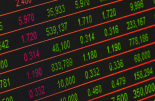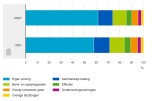Swissquote Bank: Gold smashed on massive profit taking. Strong production, output data gives a kneejerk boost to sterling
Swissquote Bank: Gold smashed on massive profit taking. Strong production, output data gives a kneejerk boost to sterling

by Ipek Ozkardeskaya, Senior Analyst at Swissquote Bank
US stocks sold sharply into the closing bell on stalling fiscal stimulus discussions in the US. Broad profit taking on tech stocks sent Nasdaq 1.69% down on Tuesday, but utilities and real estate led losses in New York on mounting worries that a delayed, or no fiscal help would severely hit revenues in these sectors.
US treasuries were aggressively offered, as well. The US 10-year yield surged to 0.65%, a month high, and the yield curve steepened as the political deadlock revived worries regarding the skyrocketing government debt in the US, where the debt-to-GDP ratio has already surged to the record level of 136% in the second quarter. Fresh blood is needed to keep the economy running and to repay the existing debt.
The steep rise in US yields hit the gold market. The precious metal dropped about $170 per oz in one session, recording its strongest drop in seven years. The gold price nosedived to $1862 per oz, as the holders of long speculative positions rushed to the exit to lock in some profit. The downside correction we have seen in gold came as no surprise given the breathtaking rally that preceded the move. But nearing the $1845 per oz, the major 38.2% retracement on March – August rally, the sell-off should cool down and leave its place to consolidation and some dip buying as the gloomy risk sentiment and the rising inflation expectations amid massive monetary and fiscal stimuli remain supportive of gold in the medium, long term.
WTI crude made an attempt on the 200-day moving average ($42.90 pb), yet rebounded lower on solid offers at this level, even though the API data suggested that the US oil inventories dropped by 4.4 million barrels last week. The morose risk sentiment will likely keep the price of a barrel below its 200-day moving average, while there is not enough conviction among the oil bears to drag the price of a barrel below the $40 per barrel just yet.
Major Asian indices edged lower on Wednesday, apart from the Nikkei (+0.44%) and Topix (+1.33%) that benefited from a softer yen.
Activity in FTSE (-0.20%) and Euro Stoxx futures (-0.78%) hint at consolidation following strong gains recorded yesterday.
The EURUSD fell to 1.1711 on the back of a sudden pop in the US dollar and has potential to extend losses toward the 1.1640 handle, the minor 23.6% retracement on March – August rebound. In the absence of major events in Europe and the US today, the pair should follow the dollar’s lead.
In the UK, the second quarter GDP data came in slightly better than expected. The British economy contracted 20.4% as the pandemic wreaked havoc on the economic activity. Business investment plunged 31.4% and the services index contracted near 20%. But the strong rebound in production and construction output in June gave a kneejerk boost to the pound following the data release. Still, the broadly stronger US dollar could jeopardize the post-data gains and drag the GBPUSD below the 1.30 mark.
Elsewhere, the Reserve Bank of New Zealand (RBNZ) maintained its official cash rate unchanged at the all-time low of 0.25%, extended its large scale asset purchases (LSAP) program to NZD 100 billion and pointed at the possibility of negative rates in case of a renewed lockdown and further pressure on the country’s already shattered economy. The RBNZ’s dovish statement sent the kiwi to more than three-week lows against the US dollar. The NZDUSD plunged below its 50-day moving average (0.6550) for the first time since May. A move below the 0.65 mark could pave the way for a deeper sell-off towards 0.6380, the June support.
The sell-off in Turkish lira cooled down amid the central bank’s decision to withdraw liquidity from the market, but the TRY risks remain tilted to the downside as investors can’t tell whether Governor Murat Uysal’s team would act on interest rates on August 20 meeting. A meaningful positive adjustment in interest rates is needed to bring the dollar below the 7 mark against the US dollar, as investors ask for higher compensation to cover the mounting inflation and default risks in Turkey.










